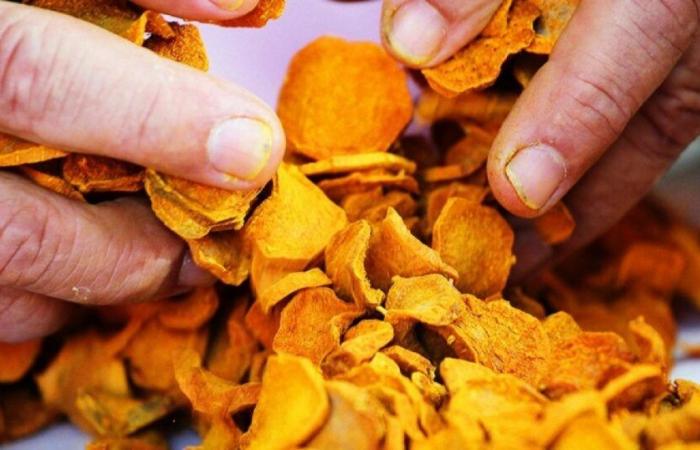This long weekend from November 9 to 11, 2024, the city of Saint-Joseph is hosting the saffron péi festival (turmeric for purists). This golden-colored spice is still popular with the people of Reunion Island. This even though the majority of turmeric sold on the island is imported. Locally, the product is a victim of the weather and the increase in prices generated by the difficulties in the sector (Photo: www.imazpress.com)
“This year is a very bad year,” explains Guibert Hoareau, producer at Plaine des Grègues (Saint-Joseph). “We try to make do with what we have,” confides France-May Lebreton, producer. The farmer cultivates turmeric in the traditional, old-fashioned way, “kom dann tan lontan”, she says.
She puts the sector's difficulties down to cyclone Belal and the heavy rains at the start of the year. “The cyclone swept away the land so we have less yield,” she says.
– Rising prices –
Faced with a gloomy harvest, producers are forced to increase prices. “This year we are going to put it at 30 euros per kilo compared to 25 euros last year,” explains Guibert Hoareau.
The péi product, grown mainly in Saint-Joseph and Saint-Phiippe, faces competition from the approximately 80 tonnes imported each year from India or Madagascar. “Products of lower quality,” believes the producer.
Turmeric from Reunion Island can be recognized by its smell in the karis and its color. “No need to add several spoons to get the taste,” says the farmer.
It also has well-known antioxidant and anti-inflammatory benefits.
Several farmers are also trying to export it to France. “Producers are starting to go organic and work with buyers from outside and not just for cooking,” our Frédéric Vienne, president of the Chamber of Agriculture. “Mr Vitry works with a cosmetic laboratory in France,” he cites as an example.
– Labor is also becoming scarce –
Another problem faced by saffron producers is the lack of labor. “I have my son and a 69-year-old who help me but it’s not enough,” explains Guibert Hoareau. According to him, he would need “at least four people on the fields all year round”. “It’s a manual profession. We’re starting to mechanize but it’s not easy.”
France-May Lebreton cultivates it in a purely traditional way. “We remove the soil, leave it on the ground, then shake it, then take it to the shed and clean it,” she explains. “We wash, we chop by hand, we make the strips which will dry naturally before being taken to the mill to become powder,” continues the farmer.
A “difficult” process which, according to her, “is being lost in the face of mechanization”.
“It takes a lot of handling for saffron and if in the past families were large and there was no shortage of labor, today solidarity is less important and less expressed,” laments Frédéric Vienne.
– A sector in the spotlight this weekend –
In powder, in vinegar, in jelly, in oil, in small rocks to taste… Reunionese people will be able to come and find turmeric péi at the Plaine de Grègues in Saint-Joseph during the “Safran en fête” event.
Also on the program are sporting and tourist events, concerts, the election of Miss Saint-Joseph, the turmeric trail and even the third youth meeting.
Nearly 30,000 visitors are expected for the event.
Find the program here.
Read also – Casud: free shuttles available for the saffron festival
ma.m/www.imazpress.com/[email protected]
News from Reunion, Agriculture, Safran, Saint-Joseph






